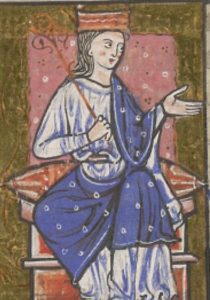
A military leader and strategist, Athelflaed came to be known as the “Queen of Saxons” by chroniclers after assuming power over and fortifying the Kingdom of Mercia. She was born in around 870, the daughter of King Alfred the Great and Ealhswith, and received the same military education as her brother, future King Edward the Elder. Together, they conquered the Danish armies occupying eastern England. She was responsible for extending her influence across Mercia, Wales and Northumbria, making her one of the most powerful female rulers of the time.
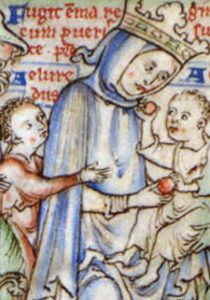 Emma of Normandy, 11th Century
Emma of Normandy, 11th CenturyQueen Emma of Normandy was a powerful figure in late Saxon England. The daughter of Duke Richard I of Normandy, Emma, was a skilled diplomat and crafty survivor. Emma was queen consort to both Aethelred II and, after his death, his Danish successor, Cnut. She also engineered the reigns of sons by both of her husbands: Harthacanute, king of Denmark and England, and Edward the Confessor, the last Anglo-Saxon king of England. Emma had strong links to Winchester – both of her marriages took place here, her son Edward the Confessor celebrated his second coronation here in 1043 and she was buried here, with her husband Cnut when she died in 1052. You can see her final resting place at Winchester Cathedral.
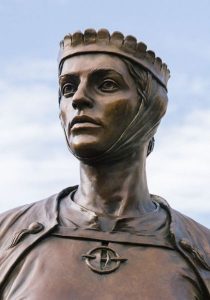 Licoricia of Winchester, 13th Century
Licoricia of Winchester, 13th CenturyIn 2022 a life-size bronze statue of Licoricia of Winchester was unveiled on Jewry Street, where the 13th century businesswoman lived. Described as ‘the most important Jewish woman of medieval England’, Licoricia was a successful moneylender whose clients included Henry III. She was also mother to son Asher, who appears in the statue. Licoricia is shown holding a tallage as Jews were heavily taxed, and in clothes worn by a wealthy woman. Jews were required to wear distinctive dress, but Licoricia is not as wealthier Jews paid for the privilege not to. While her statue highlights the trials faced by England’s medieval Jewish community, it is also celebration of this remarkable woman. You can follow the city’s Medieval Jewish Trail here.
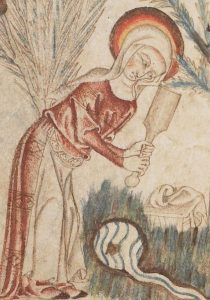 Juliana de la Floude, 13th Century
Juliana de la Floude, 13th CenturyJuliana de la Floude was a 13th century washerwoman who sought a writ from King Edward I to restore her water supply after the mayor and MP of Winchester, John de Tytyng, blocked it from reaching her Upper Brook Street launderette – preventing her scouring her clothes. The king commissioned a report and based on the findings he declared that ‘water has always been common’. He outlawed the contamination of the local water, and the ruling became part of the United Nations Convention of Human Rights. It means that today billions of people around the world have free access to fresh, flowing water.
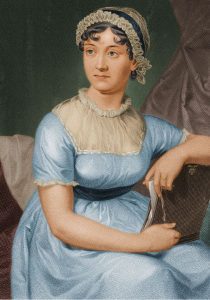 Jane Austen, 1775-1817
Jane Austen, 1775-1817Perhaps the best known trailblazing woman of Winchester is Jane Austen. Jane was living in Chawton, 17 miles from Winchester, when she suffered ill health and moved to a house in College Street for treatment for Addison’s disease – a rare disorder of the adrenal glands, believed to be the cause of her death in 1871. She is now buried in Winchester Cathedral, and her home in Chawton is open to visitors as Jane Austen’s House. Fans can also learn more about her life through the local landmarks and locations described in the Austen Trail, including Chawton House: an Elizabethan manor once owned by her brother Edward and referred to in Jane’s letters.
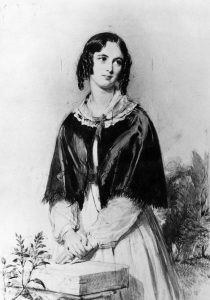 Charlotte Mary Yonge, 1823-1901
Charlotte Mary Yonge, 1823-1901Charlotte Mary Yonge was born and lived all her life in Otterbourne, a village four miles south of Winchester. This 19th century novelist, best known for The Heir of Redclyffe, published in 1853, was admired by the likes of Anthony Trollope, Lewis Carroll and Virginia Woolf. Her many books and journalism were important in spreading the principles of the High Church ‘Oxford Movement’. She also encouraged and mentored many younger women writers, including the future best-seller Mary Ward, and had two scholarships at Winchester Girls’ High School (now St Swithin’s) endowed with her name.
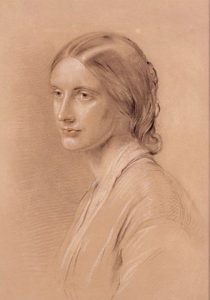 Josephine Butler, 1828-1906
Josephine Butler, 1828-1906Josephine Butler was a social reformer and pioneering feminist who lived in Winchester in the late 19th century. From 1869 she campaigned to repeal the Contagious Diseases Acts, allowing police to examine women suspected of being prostitutes for venereal diseases, which Josephine considered an infringement of women’s civil rights. She also found a refuge for recovered prostitutes in the city and fought to eradicate child prostitution and sex trafficking across the world.
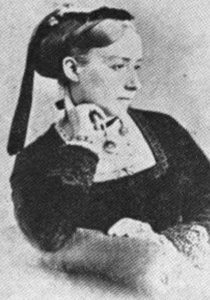
Lancashire-born, Mary Sumner relocated to Alresford upon her husband’s appointment as Rector in 1851. In 1876 Mary Sumner invited mothers to a gathering at The Church of St. Mary The Virgin, in Old Alresford, to share parenting advice and encouragement, after recognising how little support women received while parenting. She named the group The Mothers’ Union. It is now a global movement supporting families, with around four million members across 84 countries. A plaque in the church commemorates her life and work and she is buried outside Winchester Cathedral.
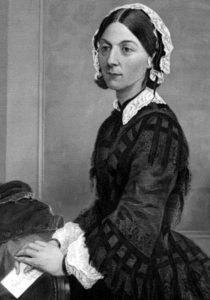 Florence Nightingale, 1829-1910
Florence Nightingale, 1829-1910Statistician, nurse and founder of modern nursing, Florence Nightingale, grew up in East Wellow, near Romsey. While her pioneering work in Crimea is well-known, her history with Winchester is less so. Florence was instrumental in the creation of the Royal Hampshire County Hospital which opened on Romsey Road in 1868. She had several letters back and forth with the Building Committee to advise the build, and eventually wrote: ‘I am quite delighted with the Winchester Infirmary plans. They show that they have been very carefully considered, and, if I criticise, I do so as I would to my own… I think you may justly congratulate yourselves on having planned a Model Hospital’. Her Winchester legacy was secured when the Hospital named ‘Nightingale Wing’ in her honour.
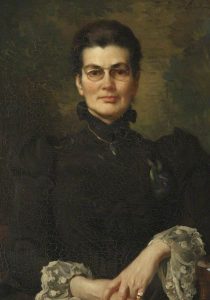 Charlotte Anne Moberly, 1846-1937
Charlotte Anne Moberly, 1846-1937Born in Winchester in 1846 to the headmaster of Winchester College, Charlotte Anne Moberly was educated from her home within the walls of the College. She was able to join many of her brothers’ lessons in Latin, Greek and Hebrew, as well as music tutelage from the College’s chapel organist. Close family friends were the Yonges, the Sumners and the Riddings (all of whom have their own remarkable women on this list). In 1886 Charlotte was appointed as Principal of St. Hugh’s Hall, which later became St Hugh’s College, Oxford, under her leadership in 1911. In this same year, she and fellow academic, Eleanor Jourdain, published their best-selling book, An Adventure. It describes an alleged incident of time travel the women experienced on the grounds of Versailles and caused a sensation upon publication.
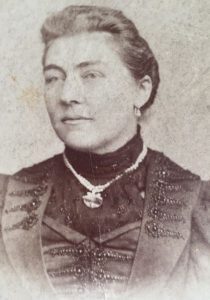 Lady Laura Ridding, 1849-1939
Lady Laura Ridding, 1849-1939Laura Ridding is best known as a biographer, suffragist and the co-founder and president of the National Union of Women Workers. She had long-standing connections with Winchester; she was influenced by the work of Winchester novelist Charlotte Yonge and later had papers published in Yonge’s magazine, The Monthly Packet, and she frequently visited the city from her family’s country home in Borden. She later married the Headmaster of Winchester College in 1876. Upon her move to Winchester, she was in regular contact with fellow activist women (including Butler, Yonge and Sumner). Her interest in the welfare of young women and girls led to the foundation of the Winchester Association for the Care of Friendless Girls and later the National Union of Women Workers. Settling in Wonston, she continued her work with the NUWW until her death.
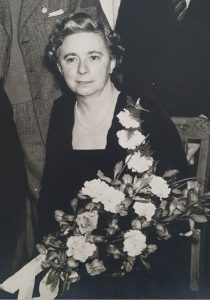 Jeanie Dicks, 1893-1980
Jeanie Dicks, 1893-1980Jeanie Dicks was a pioneer of business and engineering in Winchester. Born in 1893, Jeanie took control of her family’s electrical company, Messrs. Dicks Ltd, in 1926 after the sudden death of her father. She would go on to overcome prejudice and thrive in this male-dominated sphere of business; she was the first female member of the Electrical Contractors Association and later became president of the Winchester Chamber of Commerce. She is perhaps best known, however, for illuminating Winchester Cathedral in 1934. She competed with international firms for the contract and was praised for her expert supervision and meticulous nature. You can look out for the various former sites of J. Dicks and Co. at 5 Jewry Street, 20 High Street and 149 High Street.
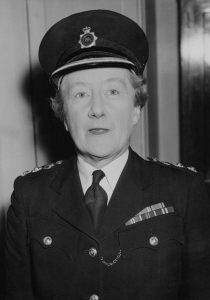 Elizabeth Bather, 1904-1988
Elizabeth Bather, 1904-1988Born in Winchester in 1904, Elizabeth Bather is best known as the first female police officer in the United Kingdom to be promoted to chief superintendent. Her father was a housemaster at Winchester College and Elizabeth herself was educated at St Swithun’s School. In 1939, she joined the Women’s Auxiliary Air Force, rising through the ranks to become wing officer in 1945. For her service, she was given an OBE in the 1946 New Year Honours. Upon her recruitment into the Metropolitan Police, she worked to reform working conditions for female officers. She redesigned the uniform and allowed women to wear makeup on duty, she removed the bar on married women joining and serving in the force, and she he gave evidence in favour of decriminalising homosexuality. A true Winchester trailblazer, Elizabeth Bather continues to pave the way for female police officers today.
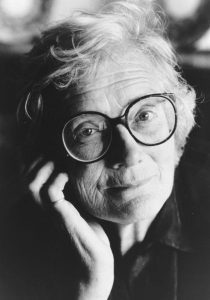 Baroness Mary Warnock, 1924-2019
Baroness Mary Warnock, 1924-2019Mary Warnock was born in Winchester in 1924 and is known for her pioneering philosophical research of reproductive rights, existentialism, euthanasia, and religion in politics. She grew up in Winchester with her mother and governess, her father having died before she was born. She never knew her brother, who had severe autism and was cared for in various institutions throughout his life. She would go on to research and pave the way for a regulatory system for fertility treatments and the inclusion of children with learning difficulties within mainstream education. Her reports guide global policy and research to this day.
Many thanks to The Soroptimist International club of Winchester for their contributions to this blog. Soroptimist International Winchester was chartered in 1962 and it has continued to transform the lives of women and girls through education, empowerment and enabling opportunities since. Their work with Winchester Women’s Refuge, Two Saints, Trinity & the Night Shelter are just a few examples of the ways in which women can collectively work for change. Find out more about Soroptimist International Winchester and District.